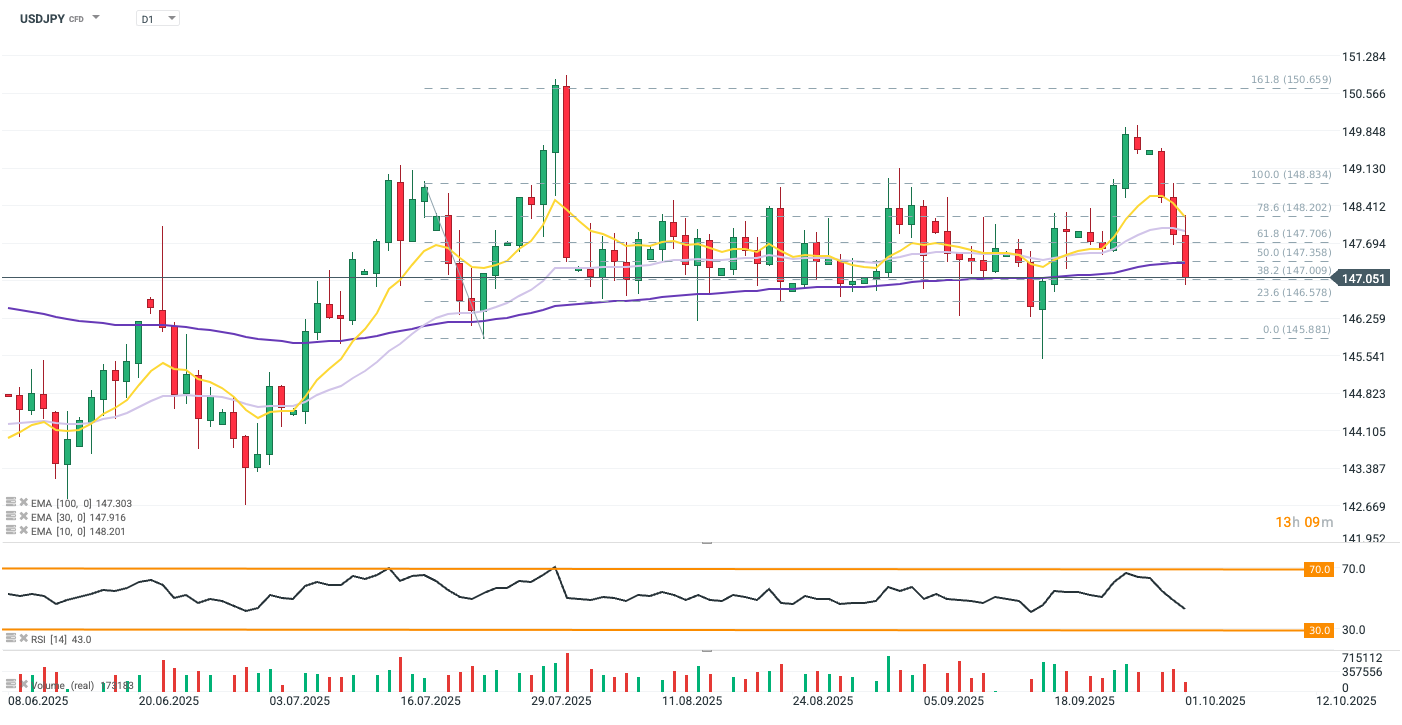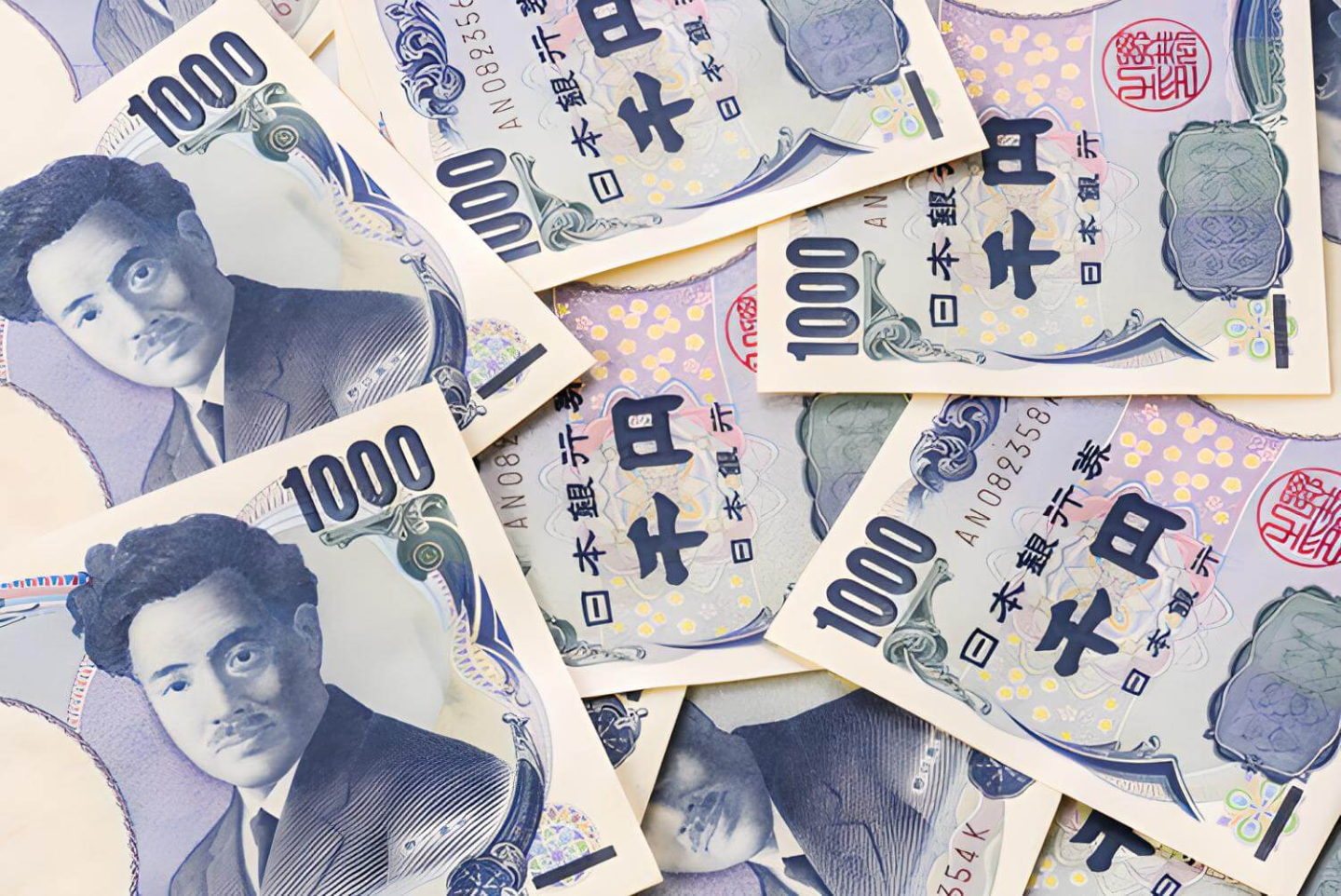The yen has been the strongest G10 currency for the third straight day, gaining 0.5% against the dollar and 0.35% against the euro. The Japanese currency is supported both by hawkish signals from the BOJ and by global dollar weakness amid the US government shutdown.

USDJPY plunged today below the 100-day exponential moving average (EMA100, dark purple), halting just above the psychological 147.000 level, which coincides with the 38.2% Fibonacci retracement of the consolidation since August. A move below 146.600 could open the door to a new downtrend, in line with the emerging policy divergence between Japan and the US. Source: xStation5
What is shaping USDJPY today?
-
The US government shutdown is reviving the yen’s appeal as a safe-haven currency. Congress failed to pass the spending bill before midnight, leaving the federal government without a budget for the new fiscal year.
-
The lack of agreement has resulted in the first shutdown since 2018, suspending operations of most federal agencies, blocking public services, and leading to upcoming layoffs (temporary or permanent). On one hand, the market sees this as part of political games ahead of the 2026 Congressional elections, but the current paralysis could last longer due to deep divisions between Democrats and Republicans over healthcare spending.
-
Japan’s manufacturing PMI came in slightly above expectations (48.5 vs. Bloomberg consensus 48.4, previous 49.7), but still pointed to the sharpest production decline in six months.
-
Meanwhile, the Bank of Japan’s “Tankan” survey showed improved sentiment among manufacturers for the second consecutive quarter, especially in the ceramics and shipbuilding sectors. This greater optimism could mark the start of a rebound once global trade stabilizes, and the data was interpreted as a fresh argument for rate hikes in Japan.
-
In addition, minutes from yesterday’s BOJ meeting revealed increasingly hawkish tones among policymakers. The return of rate hikes was widely debated at the September meeting, with the overall message suggesting it is closer than further away. The minutes, combined with recent data, prompted markets to raise the implied probability of a 25bp hike in October to 62%.
Daily Summary: Wall Street ends the week with a calm gain 🗽 Cryptocurrencies slide
NATGAS surges 5% reaching 3-year high 🔎
Bitcoin loses 3% 📉Technical bearish flag pattern?
3 markets to watch next week (05.12.2025)


